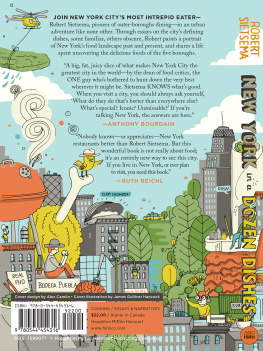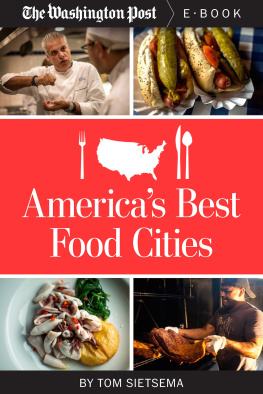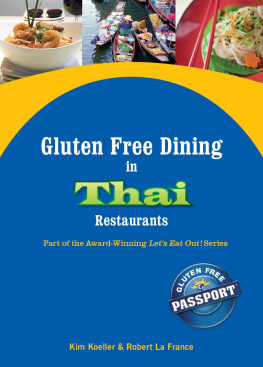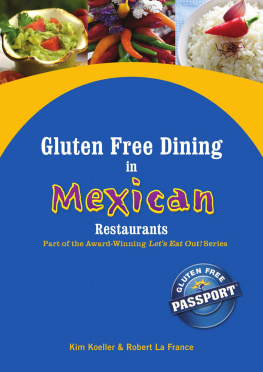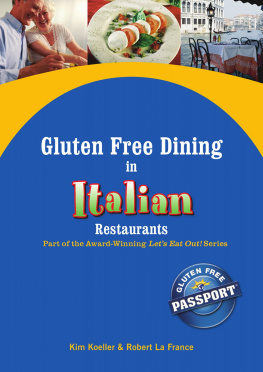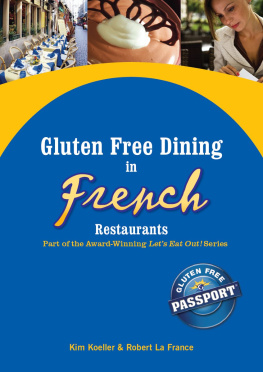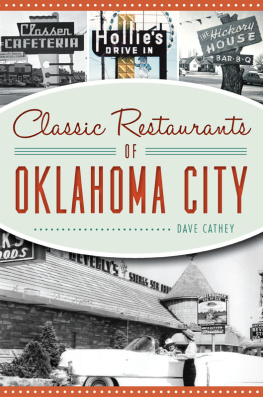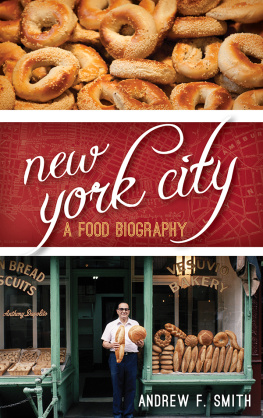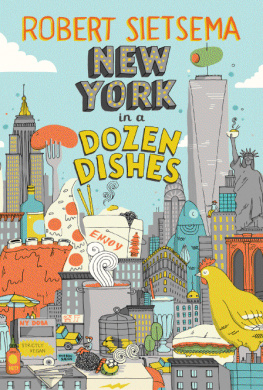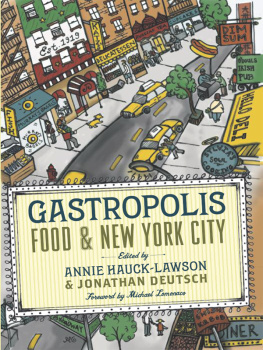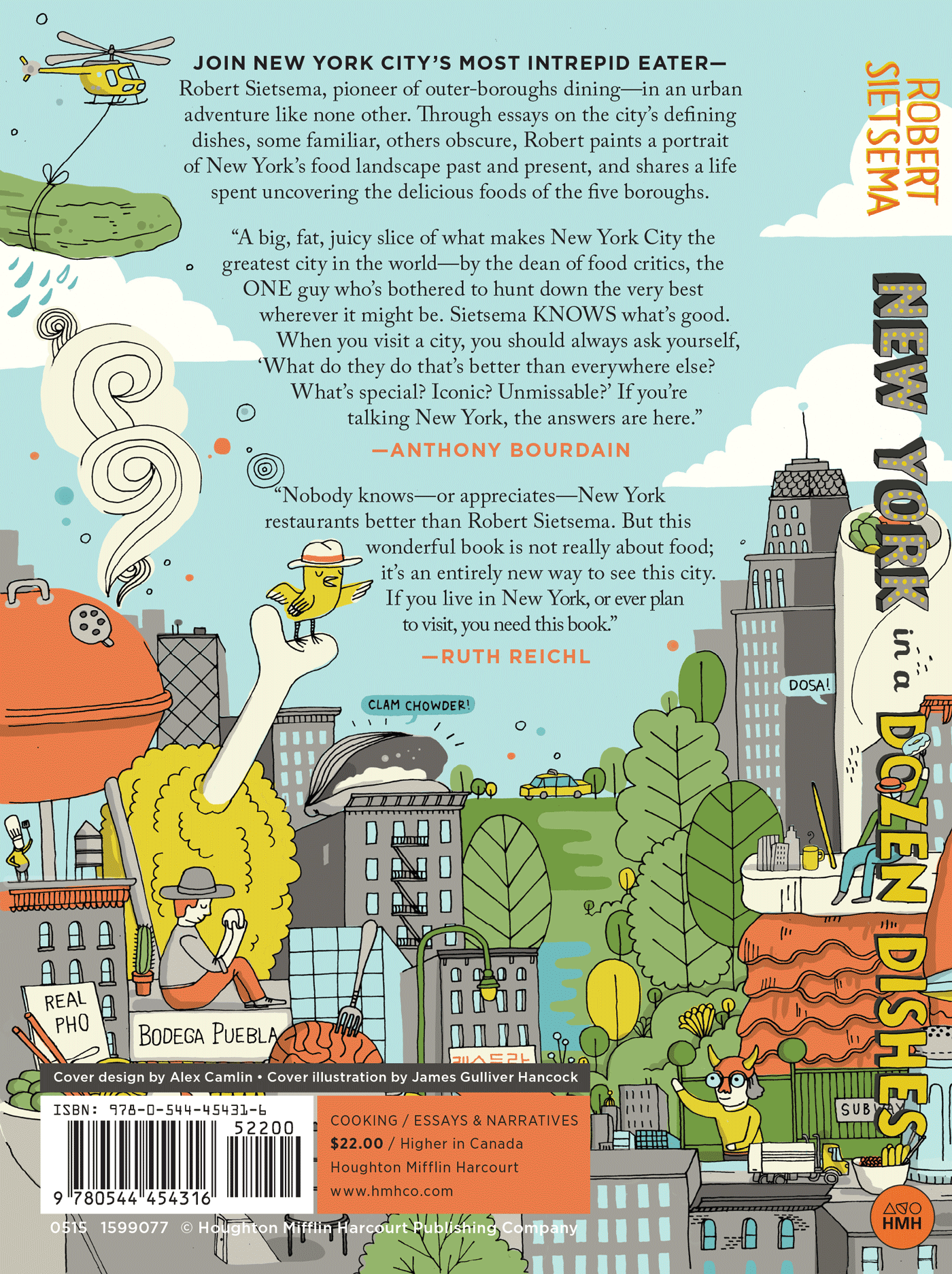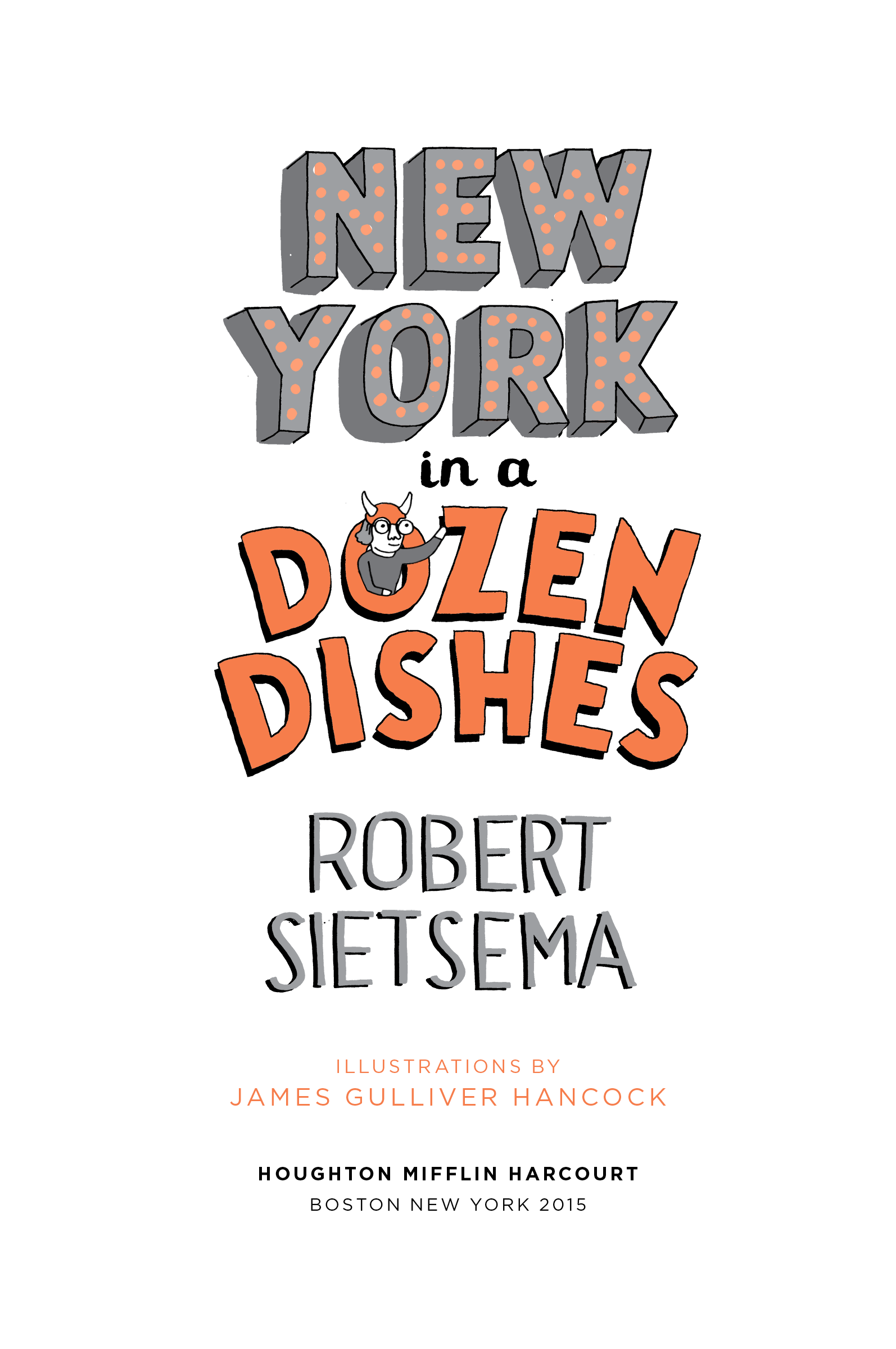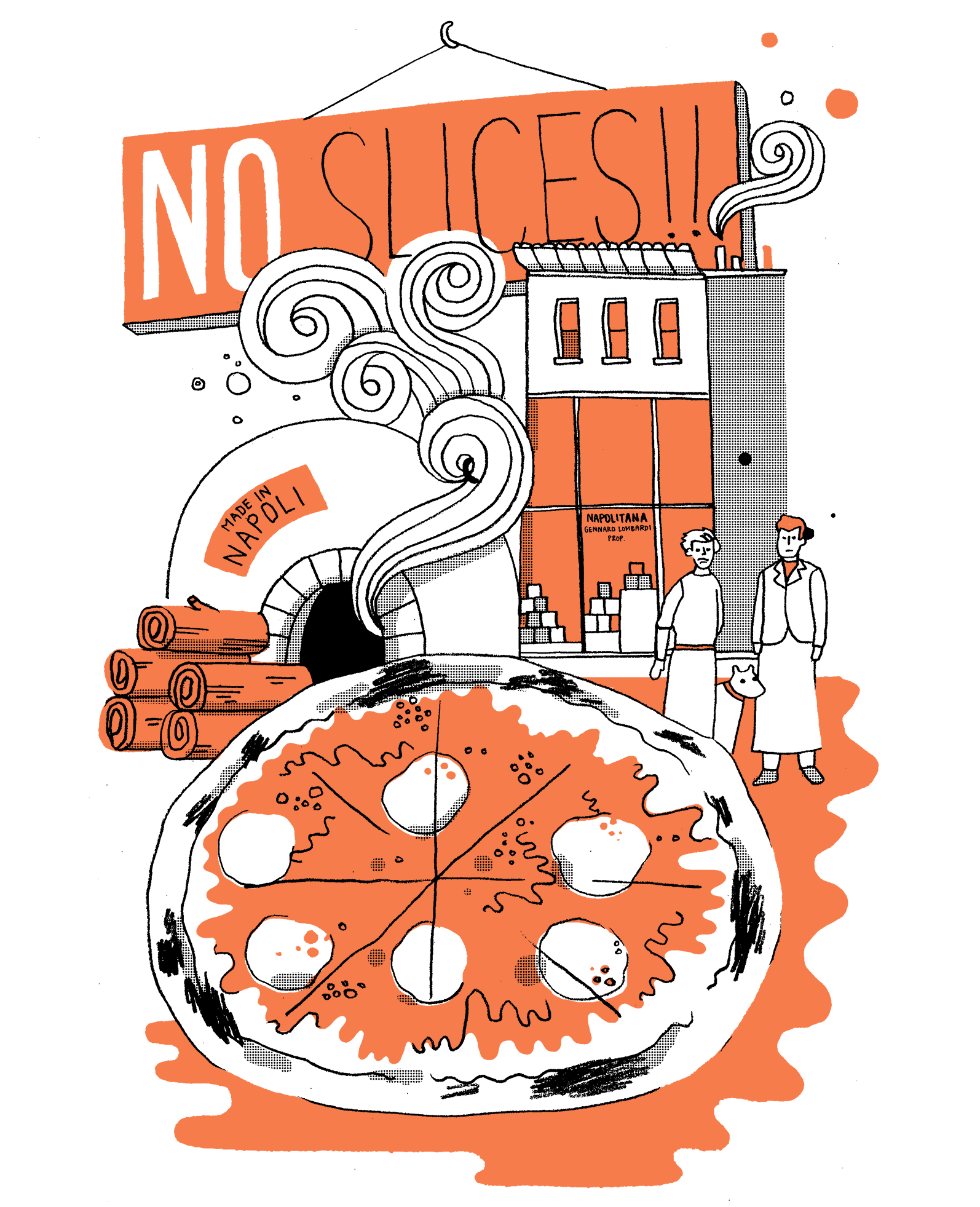New York in a Dozen Dishes
Copyright 2015 by Robert Sietsema
All rights reserved.
For information about permission to reproduce selections from this book, write to Permissions, Houghton Mifflin Harcourt Publishing Company, 215 Park Avenue South, New York, New York 10003.
www.hmhco.com
Library of Congress Cataloging-in-Publication Data is available upon request
isbn 978-0-544-45431-6 (hardcover); 978-0-544-45363-0 (ebook)
Illustrations by James Gulliver Hancock
Book and cover design by Alex Camlin
v1.0515
Contents
Dessert!
The Black-and-White Cookie
introduction
Ive noticed that people who move to the city from elsewhere often make the most avid New Yorkers. That was certainly the case with me. I arrived in the late 70s having washed out of a graduate program in Wisconsin and made a beeline for the East Village, where I found a neighborhood teetering on the verge of dissolution from drugs and decay, but with wildly cheap rents. Within one week the citys worst blackout occurred, which found residents of Stuyvesant Town across the street lowering buckets from their windows to get drinking water. A few days later, an illegal curbside welding operation saw a car burst into flames that shot up past my third-floor tenement apartment, causing me to leap out of my kitchen bathtub and run naked to the window. Becoming a New Yorker seemed a baptism by fire.
I didnt have much money, and I soon discovered that tasty and interesting food was one of the cheapest delights the city had to offer. Zeroing in on the fare of recent immigrants, I purchased a bagful of subway tokens and was soon traveling the five boroughs in search of unreconstructed ethnic eats. I joined a rock band and soon had companions on my treks of urban exploration, which found us feasting en masse on Peruvian beef-heart kebabs, delicious Indian vegetarian pancakes called dosas, tamales furtively sold by Mexican women from shopping carts behind the Port Authority, and hand-pulled Korean noodles stumbled upon on one of Flushings most obscure streets.
In 1989 I began to publish my findings in a quarterly journal called Down the Hatch, surreptitiously photocopied on colorful paper at one of the offices I worked at as a temporary secretary by day. It was the forerunner of the modern food blog. It wasnt long before the Village Voice came calling, and in 1993 I was installed as its resident restaurant critic, a job that was to last 20 years. Other freelance gigs followed in profusion, from Gourmet, the New York Times, Lucky Peach, and a dozen other publications, including Eater New York, where I am currently a full-time New York restaurant critic.
A city can be defined by its superlative dishes, the ones that induce pride among the citizenry and excitement among visitors and speak eloquently of its history and current condition. This book presents a dozen dishes (actually 13, a bakers dozen) that framed my appreciation of New York food over the years. Some of these, such as pizza and fried chicken, are well-known, though their full stories have yet to be told. Others, like guinea pig and veal brains, will never be popular enough to become lunchtime favorites, but nonetheless contribute to a full appreciation of what makes this the most interesting and diverse place to eat in the world. More than anything else, this book recounts my culinary journey through New York City over three decades, and Im grateful to you for undertaking it with me.
PIZZA
When I was growing up in the 50s, my parents displayed an almost religious belief in convenience foods. Chicken stew with noodles, chili con carne, and mac and cheese invariably came in jars, cans, and boxes, respectively. Seafood originated as crumb-coated frozen fish sticks waiting to be popped in the oven, or in salmon-filled tins destined to be tossed into casseroles with cream of mushroom soup and baked till the timer dinged. It wasnt that my parents were lazy, it was just that they believed processed foods were put on this earth by scientists intent on making our lives easier.
We were certainly not gourmands, and neither was anyone we knew in Northbrook, Illinois (a small village north of Chicago), and later in Golden Valley, Minnesota (a suburb of Minneapolis)but we craved our salty packaged foods. A meal in a restaurant was such a rare experience that before I reached college I could count the times Id eaten out on the fingers of one hand. If you have a kitchen stocked with groceries, my mother would intone, about to use a rare expletive, why the hell would you ever want to eat out? So restaurants remained a mystery to me until I left home.
Of the foods my mom would prepare, no packaged product excited me and my younger twin brothers, Bill and Dave, more than boxed pizza. I cant even remember the brand name, but it must have been Chef Boyardee. The box was tall and red, and like the Russian nesting dolls everyone displayed on their mantelpieces, it contained packages within packages. A green cardboard cylinder was filled with dry, crumbly Parmesan cheese, more salt than dairy product, and a squat can contained tomato paste. Envelopes were bursting with flour and yeastmix the yeast with a little warm water, and foamy alchemy happened. The task of making the pie was delegated to us kids, and 15 minutes after starting the project, after a few testosterone-induced tussles, a pizza would be in the oven. Sometimes pepperoni was involvedslices shaken from a can.
When the pizza came out of the oven, the crust had the texture of cardboard and tasted slightly of baking soda, the tomato sauce was too sweet by a mile, and the dried cheese had resolved itself into little swatches that floated atop the sauce like rubber rafts on a red lake. We loved it. Pizza day was party day. As the years flew by and franchise pizzerias appeared, I had the rare chance to relish the pies at Shakeys and, later, Pizza Hut but I never imagined my obsession with pizza would eventually take me not only all over the five boroughs of New York City in a decades-long odyssey but also to Boston, Hoboken, Tunisia, Argentina, and Naples itself to ferret out pizzas deepest secrets.
The First American Pie
Pizza as we know itfamily sized, generously topped, sturdy enough to eat by handwas invented in lower Manhattan. In 1895, Gennaro Lombardi arrived in New York City on the good ship Kronprinz Friedrich Wilhelm from Naples, Italy. Most of his extended family were already in New York working as tailors, and several had set up shop in the Lower East Side, then in full swing as an Italian immigrant community. But Lombardi decided to become a grocer, and established his neat little bottega at 53 Spring Streetwith cans of tomato sauce stacked in perfect pyramids in the display window and bunches of bananas on a cart trundled out front, according to a historic photograph. The picture shows Lombardi on the right adopting a somewhat reticent pose, and on the left a shorter Anthony Pero glaring at the camera, with a carefully waxed handlebar moustache and brilliantined hair shooting up in waves. He was clearly a ladies man. Both wear long, impeccably white aprons tightly cinched at the waist. A sign in the window advertises pizza.

